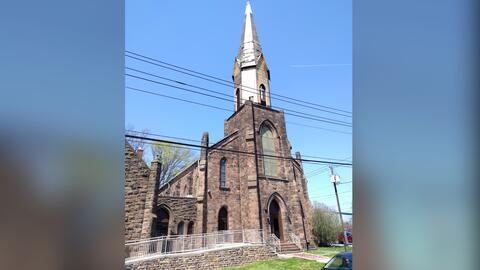”Ground-Penetrating Radar Will Be Used In Geophysical Survey”
BELLEVILLE, NJ – Township officials and historical experts will be assisting Rutgers scientists as they use ground-penetrating radar to detect unmarked graves in the basement of the Dutch Reformed Church.
The geophysical survey at the church at 171 Main St. in Belleville will begin Thursday, Nov. 14 at 8:30 a.m.
In particular, researchers will be using non-intrusive technology in a search for unmarked graves in the church’s basement.
During the survey, the located graves will be marked, and can be subsequently plotted on a map of the cemetery (called grave mapping or cemetery mapping).
The search will allow scientists to peer into Belleville’s rich and diverse history.
The basement of the Dutch Reformed Church (now called La Senda Antigua) is believed to be the resting place for several Chinese workers who were among those who built the Central Pacific Railroad and came back to live and work in Belleville about 150 years ago.
“Belleville has an amazing and diverse history,” Mayor Michael Melham said. “People from all over the world, from the Dutch to the French to the Chinese, have made Belleville their home. In particular, we are proud that Belleville was home to the very first Chinese settlement on the East Coast.”
Among those who will are scheduled to be on hand Thursday include Pastor Mike Ortiz, church owner; Dr. Francisco Artigas, MERI Research Institute at Rutgers; Dr. Alexander Gates, Director of Garden State Louis Stokes Alliance for Minority Participation; Dr. Lee Slater, Henry Rutgers Professor of Geophysics Faculty; Gabrielle Bennett-Meany, Historic Preservation Commission in the Township of Belleville and Michael Melham, Belleville Mayor.
There is history everywhere you turn at the church. The cemetery behind the church is the final resting place for 66 Revolutionary War soldiers. Many of Belleville’s important colonial families are also buried here. Many of the grave stones have deteriorated or broken over time.
The Church, which was founded in 1697, is also listed on the National Register of Historic Places as Reformed Dutch Church of Second River.
It was rebuilt in 1725 and again in 1807.
The church steeple was used as an observation post during the Revolution.
